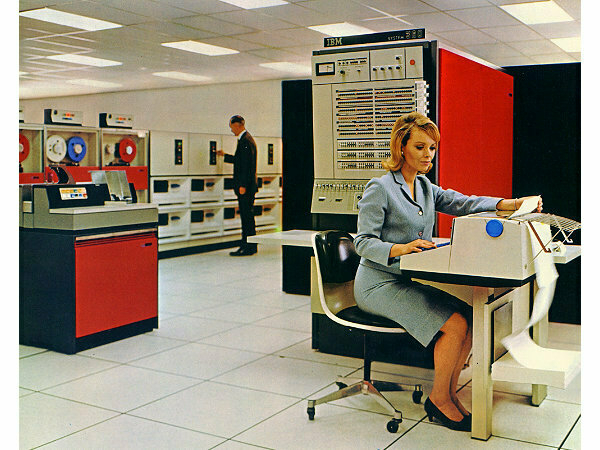IBM
We Don't See Mainframes as Legacy Technology
Half-century milestone for IBM mainframes, by Mark Ward at BBC News, April 7th, 2014.

Most interesting about the passage below, is that they’re referring to mainframes right now, not 50 years ago.
"I don't think people realise how often during the day they interact with a mainframe," he said.
Mr Heptonstall said mainframes were behind many of the big information systems that keep the modern world humming and handled such things as airline reservations, cash machine withdrawals and credit card payments.
The machines were very good at doing small-scale transactions, such as adding or taking figures away from bank balances, over and over again, he said.
"We don't see mainframes as legacy technology," said Charlie Ewen, chief information officer at the Met Office, which has been using mainframes for 40 years.
(Revised and republished March 30th, 2025)
IBM System/360 - 50th anniversary
IBM recently celebrated the 50th anniversary of the System/360 mainframe, which was announced on April 7, 1964.
IBM press announcement text for the System/360, 1964 (Wayback Machine link)
IBM System/360 at the Computer History Museum
The System/360, or S/360 is discussed in this IBM video, “IBM Centennial Film: They Were There.”
youtu.be/XrhDaAmn5… (video no longer available)
Also from IBM, System 360: From Computers to Computer Systems (Wayback Machine link):
Most significantly, the S/360 ushered in an era of computer compatibility—for the first time, allowing machines across a product line to work with each other. In fact, it marked a turning point in the emerging field of information science and the understanding of complex systems. After the S/360, we no longer talked about automating particular tasks with “computers.” Now, we talked about managing complex processes through “computer systems.”
(Revised and republished April 1st, 2025)
Paperwork Explosion
This video, created by Jim Henson in 1967 for IBM, makes a great first post. So much anxiety, so little time, if only there was someone to help…like IBM!
Ben Kafka discusses this video in the Conclusion of his book, The Demon of Writing: Powers and Failures of Paperwork (2012), and also in this online West 86th article (Wayback Machine link):
The “paperwork explosion” expresses both a threat and a wish. The threat, of course, is that we are being overwhelmed by paperwork’s proliferation, its explosion — a threat that historian Ann Blair has recently traced through the early modern period. The wish is to convert all this cumbersome matter into liberating energy, which is exactly what explosions do. From Chaptal’s “electric fluid” to IBM’s “Machines Should Work, People Should Think” to USA.gov’s “Government Made Easy,” we remain attached to the idea that someday, somehow, we can liberate this energy, put it to other uses.
The “liberating energy” that Kafka speaks of also requires containment, it needs direction and control, services which IBM was ready to supply.
Two other aspects of paperwork which I’m researching are: (1) the degree to which IBM was instigating the “paperwork explosion” itself, where was it coming from, who else was worried about it, and (2) how the militaristic response to the demands of paperwork figure into the Cold War environment.
(Revised and republished April 6th, 2025)
Keeping TaB with diet soda
TaB soda was named by an IBM mainframe (Wayback Machine link) – now it makes sense. The name was supposed to relate to keeping “tabs” on your weight (Wayback Machine link), rather than being an acronym for “totally artificial beverage.”
To obtain a list of potential names, William Mannen, chief programmer for data processing, programmed the company’s IBM 1401 (Wayback Machine link) mainframe computer to print all possible four-letter word combinations containing a vowel or vowel-sounding letter. The results took a day to print and contained more than 300,000 possible combinations. This list was narrowed down to 600 possibilities, which were then given to the legal department to check against existing trademarks. After legal narrowed the list again, TaB was chosen from among the final two dozen contenders. Why? Because it was distinctive and easy to remember, and it projected the desired image.

(via @melissaterras on Twitter)
(Revised and republished April 21st, 2025)